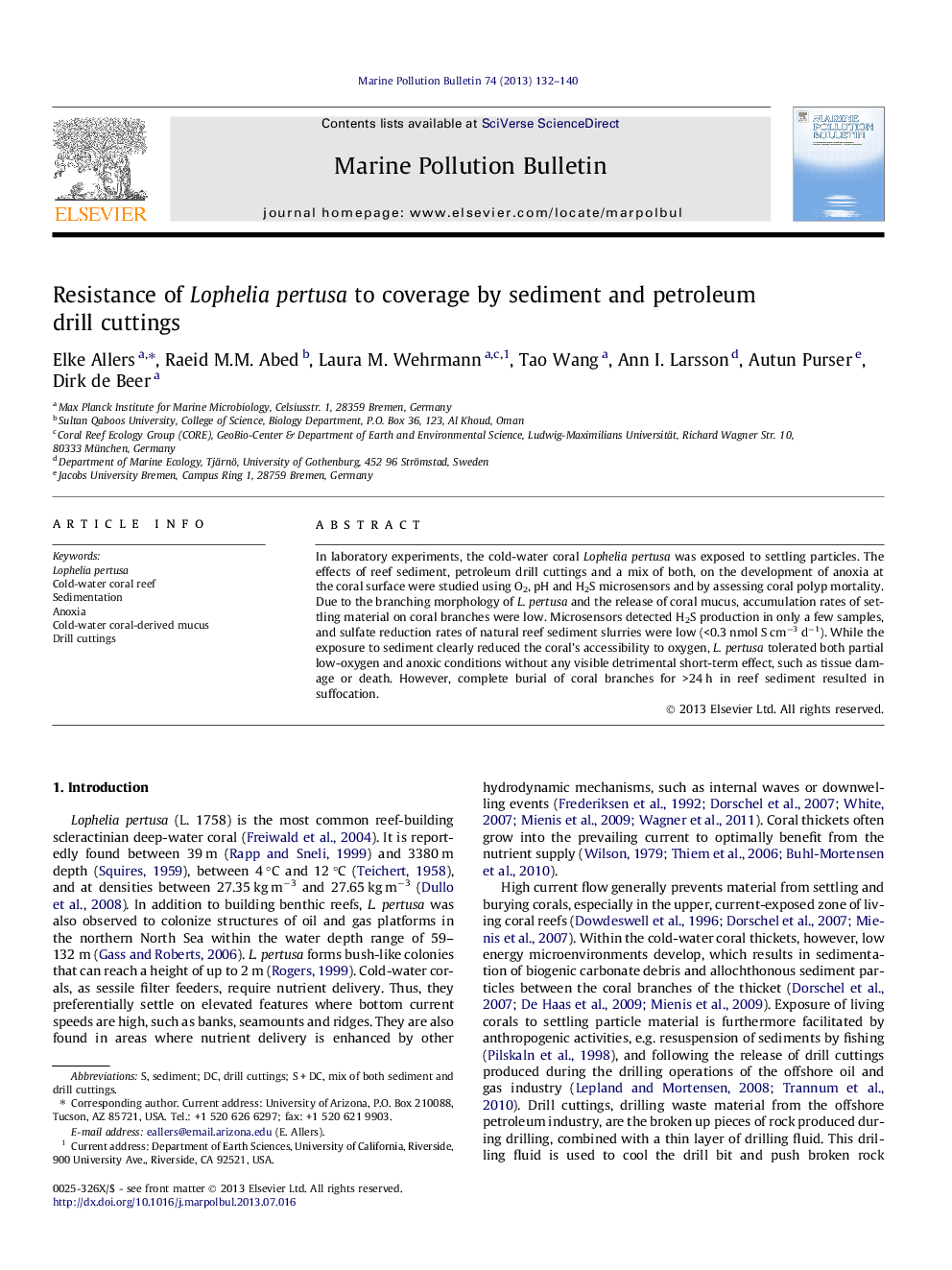| Article ID | Journal | Published Year | Pages | File Type |
|---|---|---|---|---|
| 6359640 | Marine Pollution Bulletin | 2013 | 9 Pages |
Abstract
In laboratory experiments, the cold-water coral Lophelia pertusa was exposed to settling particles. The effects of reef sediment, petroleum drill cuttings and a mix of both, on the development of anoxia at the coral surface were studied using O2, pH and H2S microsensors and by assessing coral polyp mortality. Due to the branching morphology of L. pertusa and the release of coral mucus, accumulation rates of settling material on coral branches were low. Microsensors detected H2S production in only a few samples, and sulfate reduction rates of natural reef sediment slurries were low (<0.3 nmol S cmâ3 dâ1). While the exposure to sediment clearly reduced the coral's accessibility to oxygen, L. pertusa tolerated both partial low-oxygen and anoxic conditions without any visible detrimental short-term effect, such as tissue damage or death. However, complete burial of coral branches for >24 h in reef sediment resulted in suffocation.
Keywords
Related Topics
Physical Sciences and Engineering
Earth and Planetary Sciences
Oceanography
Authors
Elke Allers, Raeid M.M. Abed, Laura M. Wehrmann, Tao Wang, Ann I. Larsson, Autun Purser, Dirk de Beer,
